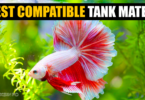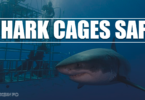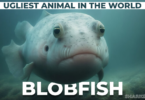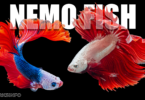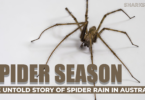Among all the members of the sponges living under the water, The Giant Barrel Sponge is the largest member of the family Petrosiidae. Scientifically they are named Xestospongia muta whereas commonly they have many names like Blue Barrel Sponge, Marine Sponges, Volcano Sponge, and Siliceous Sponges.
The Giant Barrel sponge is the oldest member of the sponge family living on the planet which is why they are the most studied and monitored marine creature. We, in this article, are going to explore more about the living strategies of the Giant Barrel sponge and reveal some of the known facts about them. Scroll down!
Where In The World does The Giant Barrel Sponge Live?
The Giant Barrel sponge has a wide range of distribution but they are commonly inhabited by coral and rocky reefs of the Caribbean Sea. These marine species are also native to the Gulf of Florida, the Bahamas, the central coast of America, the Great Antilles, and Venezuela. The Giant Barrel sponge is found living in the tropical waters of the Atlantic Ocean. These are benthic creatures that usually live at the depth of 33 to 390 feet or 10 to 120 meters depending upon the locality.

What Is The Physical Appearance Of The Giant Barrel Sponge?
The Giant Barrel sponge is a barrel-shaped soft structure, having a wall that has a thickness of 2.5 cm from the top, and with time, the thickness increases from the base. They are known as the “redwood of the reef” as they have an average height and diameter of 1 meter but some specimens may extend to a diameter of 2 meters as well.

The Giant Barrel sponge varies in colors, they may have brown, grey, reddish brown salmon pink, and rose-purple coloration. The body possesses small spikes-like appendages called spicules, water enters through the Ostia – a small pore that increases the filtration efficiency and provides them with food particles.
How Do The Giant Barrel Sponge Maintain Their Size?
Well, these species are all dependent upon their feeding habitat which allows them to sustain their giant size. They not only feed on the large prey of the oceans such as sharks or whales but also eat a large volume of the food to maintain their energy level.

The Giant Barrel sponge is a filter feeder which feeds on microorganisms, they possess special cells in the inner cavity called choanocytes which provide the giant creature with food particles by filtering them from the flowing water. However, the studies also depicted that they feed on a large population of cyanobacteria.
How Do The Giant Barrel Sponge Reproduce?
The researchers believe that the Giant Barrel sponge is dioecious but in actuality, these species are sexually dimorphicwhich means that the male and female sponges are separate but are morphologically the same. The marine creature reproduces in a group where the spawning event occurs, and eggs and sperms are released synchronously.

The sperm fertilized the eggs which after some time develops into larva. The larvae are then carried by the flow of water to a new spot on the floor of the ocean where it develops independently into a new Giant Barrel sponge.
What Is The Conservational Status Of The Giant Barrel Sponge?
In the Redlist of IUCN, the Giant Barrel sponge has been considered a “Non-Evaluated” marine creature. Although, the population of these sponges has been increasing continuously which might affect the coral reef because they are taking up the space of the baby corals.
However, they have been facing several potential threats such as pollution, change in climatic conditions, sedimentation, ocean acidification, traumas from fishing gears boats or divers, and coastal development. Other than that, they have been a valuable asset for underwater creatures such as turtles, fish, or sea urchins but are not considered endangered or threatened by researchers.
Interesting Facts About The Giant Barrel Sponge
As these creatures are not been studied in detail, so there is much more interesting about the Giant Barrel sponge that needed to be explored. Some of the interesting and knowledgeable facts which will amaze you are enlisted below:
1: The Giant Barrel sponge is a sessile species which means that they are fixed in one place.
2: They are the most important member of the oceanic food chain, providing the other animals with abundant nutrition.
3: They are becoming dominant among the coral communities and covering about 90% of the coral space.
4: They have a symbiotic relationship with cyanobacteria.
5: They help microscopic bacteria in nitrification and carbon fixation.
6: During the breeding season, the Giant Barrel sponge can release about 1.4 million eggs.
7: They have an incredible life span of 2,000 years.
8: The body of The Giant Barrel sponge is covered with spines-like spicules which provide them defense from predatory animals.
9: The oldest known member of The Giant Barrel sponge is found in the coastal region of Curacao and is about 2,300 years old.
10: The Giant Barrel sponge is not commercially beneficial for humans but its filtering tactics flourish the marine ecosystem.
Final Words
The Giant Barrel sponge is the largest member of the marine sponge family, the species have been spotted usually at the depth of 10 to 120 meters commonly in the coral reefs of the Caribbean Sea. They can reach a diameter of 1 meter normally but some specimens can reach up to 2 meters. The Giant Barrel sponge maintains their enormous body by feeding on a large volume of food particles flowing along the water current. They can filter the microorganism to feed on, moreover, they also provide other marine creatures with diversified food stuff keeping the oceanic ecosystem healthy.


